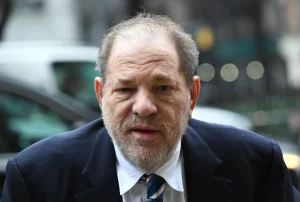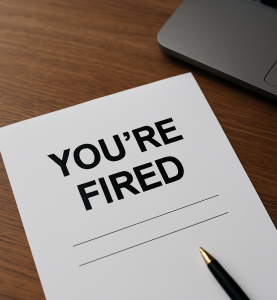After the New York Times story ran, the hashtag #MeToo went viral and nearly broke the internet, thus sparking a widespread movement among female employees to band together and bravely showcase their experiences through various social media platforms. Employers could no longer turn a blind eye and quiet their voices. Women everywhere demanded action on behalf of those responsible for creating safe work environments. The world finally listened, and the legal landscape began to shift—some of it for better and some of it for worse.
What is Sexual Harassment in the Workplace?
Unwelcome sexual advances that create an offensive or hostile working environment violate Title VII. Meritor Sav. Bank, FSB v. Vinson, 477 U.S. 57, 63, 106 S. Ct. 2399, 2404 (1986). When a supervisor sexually harasses a subordinate because of the subordinate's sex, that supervisor "discriminate[s]" on the basis of sex. Id. Sexual harassment by a supervisor against a subordinate, which results in tangible discriminatory action at work is automatically imputed to the employer for Title VII purposes regardless of whether the employee gave "notice" of the offense. Id. at 78. This is known as quid pro quo sexual harassment.
Under federal law, a “hostile work environment” claim requires an employee to show that: "the harassment was 'sufficiently severe or pervasive to alter the conditions of the victim's employment and create an abusive working environment... '"
Determining a hostile environment claim in the absence of quid pro quo sexual harassment – i.e., when the sexual harassment involves co-workers as opposed to supervisors and subordinates – requires an inquiry into the frequency of the conduct, its severity, whether it physically threatens or humiliates or is just merely offensive, and whether it unreasonably interferes with an employee's work performance. Richardson v. New York State Dep't of Correctional Serv., 180 F.3d 426 (2d Cir. 1999). It does not, however, require the plaintiff show tangible economic injury. See, e.g., Meritor Savings Bank, FSB v. Vinson, 477 U.S. 57, 64-65, 91 L. Ed. 2d 49, 106 S. Ct. 2399 (1986). Under federal law, a “hostile work environment” claim requires an employee to show that: "the harassment was 'sufficiently severe or pervasive to alter the conditions of the victim's employment and create an abusive working environment... '" Alfano v. Costello, 294 F.3d 365, 373 (2d Cir. 2002) (citations omitted); see also Oncale v. Sundowner Offshore Servs., Inc., 523 U.S. 75, 78, 140 L. Ed. 2d 201, 118 S. Ct. 998 (1998) (stating that a hostile work environment is created "when the workplace is permeated with discriminatory intimidation, ridicule, and insult that is sufficiently severe or pervasive to alter the conditions of the victim's employment and create an abusive working environment"). A single act can create a hostile work environment if it in fact "work[s] a transformation of the plaintiff's workplace." Feingold v. New York, 366 F.3d 138, 149-50 (2d Cir. 2004).
Under the twin landmark cases of Faragher v. City of Boca Raton, 524 U.S. 775 (1998) and Burlington Industries Inc. v. Ellerth, 524 U.S. 742 (1998), an employer can be held liable for any sexual harassment that occurs among employees if, and only if, (a) the sexual harassment has resulted in a tangible detrimental action against an employee by a supervisor; or, (b) in the absence of such specific action, the employer has not implemented a meaningful remedial regime to address incidents of sexual harassment among co-workers. Thus, for the past twenty years under the Faragher-Ellerth framework, women in the workplace have been forced to address their complaints of sexual harassment to human resources departments that conduct internal investigations geared towards quiet resolution rather than competent justice. Perhaps with the momentum of the #MeToo movement, the time has finally come to outlaw sexual harassment in the workplace by imposing strict liability on employers for all such conduct.
By exposing sexual harassment for what it is—an abuse of power through the perversion of intimacy—you may be able to bridge the chasm between the hostile work environment claim that allows for the Faragher-Ellerth affirmative defense and the quid pro quo claim that imposes strict liability.
The Faragher-Ellerth construct was envisioned by the Court as both an employer’s shield and an employee’s sword – i.e., employers are entitled to an affirmative defense against vicarious liability for sexual harassment in the workplace if they timely and meaningfully address such complaints by employees as they arise. See Faragher, 524 U.S. at 807-08. Faragher-Ellerth aimed to incentivize employers to implement effective preventative measures against sexual harassment in the workplace that would discourage employees from engaging in conduct creating a hostile work environment while concomitantly encouraging employees to report any such violative conduct. See Ellerth, 524 U.S. at 764 (“Title VII is designed to encourage the creation of anti-harassment policies and effective grievance mechanisms … [so that] [w]ere employer liability to depend in part on an employer's effort to create such procedures, it would affect Congress' intention to promote conciliation rather than litigation in the Title VII context and the EEOC's policy of encouraging the development of grievance procedures”) (internal citations omitted). As the theory goes, employers will be rewarded for implementing anti-harassment policies and procedures that protected employees, and the prevalence of sexual harassment or assault in the workplace will, therefore diminish over time. As the #MeToo movement has proven, however, that theory never mirrored reality.
Whenever Possible, Frame the Sexual Harassment/Assault Alleged as Warranting Strict Liability.
hus, sexual harassment is most cogently understood in terms of the power imbalance, not the sexual intent, between those involved.
By exposing sexual harassment for what it is—an abuse of power through the perversion of intimacy—you may be able to bridge the chasm between the hostile work environment claim that allows for the Faragher-Ellerth affirmative defense and the quid pro quo claim that imposes strict liability. Current events have pointedly demonstrated that the aspirations of the Faragher-Ellerth regime have proved to be ephemeral and the time to renounce the judicial demur against employer strict liability for workplace sexual harassment is long overdue.
As posited by Catharine MacKinnon in her 1979 groundbreaking book, The Sexual Harassment of Working Women: A Case of Sex Discrimination, workplace sexual harassment can be combated legally only by recognizing it for what it is: the most destructive type of unlawful employment discrimination. Discrimination, of course, can only exist if the discriminator has power over the discriminated. Thus, sexual harassment is most cogently understood in terms of the power imbalance, not the sexual intent, between those involved. It is that power imbalance, channeled as sexual animus, which has allowed sex, or gender stereotypes as proxies for sex, to impede the advancement of women in the workplace.
Having accepted this argument, it is a small logical leap to the position that all sexually hostile work environments are based on a power imbalance that tacitly enforces a pernicious quid pro quo favoring men over women. The current facts on the ground dictate that the price of entry for women in general business society is objectification. Unfortunately, that ante is upped to oppressive sexualization (aka hostile work environment harassment) in certain industries, and outright quid pro quo harassment in others. But the gender disparity is always there, as can easily be proven by the well-documented and persistent wage differential between men and women.
The #MeToo movement has been a catalyst for promoting a new cultural standard that sexual harassment in any form is intolerable.
Thus, the argument can (and should) be pressed by employee rights advocates that the overwhelming prevalence of workplace sexual harassment in American society has rendered the Faragher-Ellerth analysis somewhat obsolete. Given apocalyptic workplace sexism that the #MeToo movement has exposed, what type of sexual harassment can honestly be said to exist in corporate America that is not axiomatically based on a gender-entrenched power imbalance that allows men to sexualize women in the workplace almost at will, thereby depriving women of the equal employment opportunities that are guaranteed them by statute? Exposing this unfortunate current reality to judges and juries will better position you to discern facts supporting tacit quid pro quo harassment and retaliation claims where, at first blush, only garden variety he said/she said or hostile work environment claims could be seen.
Indeed, by embracing your role as an educator regarding the pernicious and pervasive nature of sexual harassment/assault in the American workplace, you will be better able to contextualize and explain your client’s actions in the workplace especially with respect to conduct that a fact finder may consider inconsistent with a victim’s story:
- Why did your client endure the harassment for such a long period of time? Perhaps because she feared retaliation or was under the influence of a serial predator.
- Why did your client appear to voluntarily acquiesce to specific sexual acts? Perhaps because she was threatened with career stagnation or termination or because the predator targeted his prey carefully and chose a victim who, because of her background, was less likely to fight back.
- If harassment was so bad, why didn’t your client quit? Perhaps because she has experienced the same sexist boorish behavior from her male colleagues in the last five jobs she has held or because she is the main source of income for her family.
- Why did your client fail to complain or delay her reporting of the harassment to human resources or management? Perhaps because nothing was done when she did so previously or she feared retaliation.
- Why did your client fail to confide in her spouse or partner about the sexual harassment or assault? Perhaps because she was ashamed to admit that she was powerless to stop it or because she feared being forever labeled as the victim or because she feared the reaction of her spouse or partner.
Changes Under New York State Law
A starting point is learning what it means to suffer from a hostile work environment because of sexual harassment.
The #MeToo movement has been a catalyst for promoting a new cultural standard that sexual harassment in any form is intolerable. This new standard called for swift legislative action, and New York State delivered in 2019.
Claims of sexual harassment are no longer governed by the same federal standard in New York State. In August of this year, Governor Andrew Cuomo signed into law a bill that applied broad changes to the New York State Human Rights Law (“NYSHRL”) in order to amplify protections for victims of sexual harassment. While a sexual harassment claim brought under federal law is subject to the “severe or pervasive” standard, under the NYSHRL, the meaning of harassment is to be construed more liberally, as an employer is deemed to have engaged in “an unlawful discriminatory practice when it subjects an individual to inferior terms, conditions or privileges of employment” because of his or her protected characteristics.
Furthermore, employers will now have a seemingly narrower affirmative defense to liability under New York state law if “the harassing conduct does not rise above the level of what a reasonable victim of discrimination with the same protected characteristic would consider petty slights or trivial inconveniences.”
“The fact that such individual did not make a complaint about the harassment to [his or her] employer . . . shall not be determinative of whether” such employer is liable. Thus, under New York State law, it is no longer required to place your employer on notice of the sexual harassment in order to have a viable claim of sexual harassment.
Long gone are the days of the “One-Man-Show Human Resources Department.”
Changes in HR Policy and Procedure
While the overall employer response to the #MeToo movement resulted in a careful review and critique of current policies and the implementing of new ones, here are some supplemental helpful tips to employees and employers to ensure that the work environment is protected from incidents of sexual harassment against women:
Employees—ask for training: A starting point is learning what it means to suffer from a hostile work environment because of sexual harassment. Ask for educational resources from your employer, in order to protect yourself from being either the victim or perpetrator of sexual harassment. If you work for a New York employer, it is now required by law for employers to regularly provide sexual harassment training.
Employers—ensure that HR personnel are well-equipped to better manage instances of sexual harassment and a hostile work environment: Long gone are the days of the “One-Man-Show Human Resources Department.” Employers are now wising up and working to ensure that their HR teams are vast and knowledgeable of the law, and that they are collaborating with in-house counsel or external law firms that specialize in employment matters on issues pertaining to sexual harassment in the workplace.
You’ve Fallen Victim to Sexual Harassment: Now What?
Place your employer on notice:
Although in New York state providing notice of the sexual harassment to your employer is not necessary in order to demonstrate liability, it is still nevertheless strongly recommended so that your employer may take appropriate remedial action. Formal complaints should be in writing, and may be written by an attorney on your behalf, or you may decide to complain to your employer without having the appearance of legal representation, after consulting with a highly-skilled employment attorney.
After your employer has been placed on notice of the sexual harassment, it triggers a legal obligation for your employer to act immediately. Most often, employers will initiate an investigative procedure into your complaint, and the procedure itself is specific to the employer.
After your employer has been placed on notice of the sexual harassment, it triggers a legal obligation for your employer to act immediately.
Cooperate with your employer:
Continue to complete your duties and responsibilities in the most consistent and excellent manner possible. While participating in the investigative process can sometimes feel daunting and overwhelming, it is important to continue to perform with excellence and efficiency, so as not to give your employer any legitimate, non-discriminatory reason for an adverse action against you. Cooperate with your employer and the human resources department during the investigative process to ensure that you are willing and receptive to engaging in an interactive process that achieves a resolution to your complaint.
Pursuant to the Faragher-Ellerth affirmative defense, the employer must show "(a) that it exercised reasonable care to prevent and correct promptly any sexually harassing behavior, and (b) that the employee unreasonably failed to take advantage of any preventive or corrective opportunities provided by the employer or to avoid harm otherwise." Townsend v. Benjamin Enterprises, Inc., 679 F.3d 41, 50 (2d Cir. 2012) (citing Faragher, 524 U.S. at 807 and Ellerth, 524 U.S. at 765).
If your employer takes no remedial action through exercising reasonable care to prevent and correct promptly any sexually harassing behavior, your employer is indeed liable, and cannot assert this affirmative defense.
Seek Competent Legal Help
While the country continues to lay the foundation for more cohesive and forward-thinking policies to ensure equal and non-discriminatory working environments, it is imperative that well-versed practitioners strive to create a space for historical and prodigious change. The responsibility of legal professionals as educators and agents that facilitate change is vast. If you are concerned about an issue of sexual harassment in New York City or the surrounding areas, attorneys at Phillips & Associates are ready to advise you. Call us at (212) 248-7431 or contact us through our online form for a free consultation. We handle employment litigation in Manhattan, Brooklyn, Queens, Staten Island, and the Bronx, as well as Westchester, Nassau and Suffolk Counties.
www.newyorkcitydiscriminationlawyer.com/
Parisis G. Filippatos
Parisis G. (Gerry) Filippatos, a seasoned and versatile New York City employment discrimination attorney, is a Partner at Phillips & Associates and manages our White Plains Office. Mr. Filippatos is dedicated to representing individuals across the corporate spectrum in all types of workplace disputes, with a particular emphasis on litigating gender discrimination, sexual harassment, and retaliation/whistleblower cases against financial services and Fortune 500 companies, as well as negotiating executive compensation/employment contracts and severance agreements.
Mr. Filippatos has litigated labor and employment cases for over 28 years and has represented thousands of individuals and numerous companies on myriad matters involving employment discrimination, retaliation and harassment based on race, sex, age, disability, religion, sexual orientation and gender identity; separation and severance agreements; executive compensation contracts; restrictive covenants; workplace investigations; and whistleblower and regulatory non-compliance claims. He has handled claims based on Title VII, ADA, ADEA, FMLA, Sarbanes Oxley and Dodd Frank. Starting as an NYC Assistant Corporation Counsel, then in private practice, first as a management-side attorney, and later as an employee advocate, Mr. Filippatos has encountered employment disputes from truly varied perspectives, including as a principal litigator on a landmark glass ceiling case against Morgan Stanley, Inc., in 2004.
Mr. Filippatos was born and raised in New York City, migrating along the Hudson from Hell’s Kitchen to the Upper Westside, to Riverdale, before settling in Pleasantville, New York. Mr. Filippatos studied Political Science at Columbia University, where he obtained his B.A., cum laude, with departmental honors, in 1988. Mr. Filippatos attended Boston College Law School, receiving his Juris Doctorate in 1991. Mr. Filippatos was a founding partner at another large plaintiff’s employment law firm in New York before opening his own firm in 2004. Immediately before joining Phillips & Associates, Mr. Filippatos was in-house counsel to a jointly trusteed labor-management organization where he advised on strategic issues such as regulatory compliance and organizational structure, while also teaching government and labor studies to union apprentices.
Mr. Filippatos has lectured and published with the National Employment Lawyers Association, the American Conference Institute, the American Bar Association, and the Practicing Law Institute, on various topics in labor and employment law, including reductions in force; whistleblower protection; discrimination and retaliation claims; family and medical leave; violence and harassment in the workplace; case assessment; litigation tactics and strategies; EEOC, DOL and SEC administrative procedures; diversity training; and legal ethics. He is a member of the ABA, NELA and NELA/NY. He is fluent in Modern Greek.
Danielle M. Patterson
Ms. Patterson graduated Cum Laude from New York University with a BSW in Social Work, and from Columbia University with an MSW, with a concentration in Advanced Clinical Social Work and Contemporary Social Issues. In maintaining her commitment to and passion for social justice, she then received her JD from St. John’s University School of Law in Queens, New York. While in law school, Ms. Patterson served as a Secretary of the Labor and Employment Relations Society, and as a Member of OutLaws and Allies. Ms. Patterson also published the paper Title VII Bars Discrimination in Employment Based on Race, Color, National Origin, Religion, Sex and...Sexual Orientation?, which discussed the vital impact of the recent Supreme Court case Altitude Express, Inc. v. Zarda in the fight against workplace discrimination on the basis of sexual orientation.




















